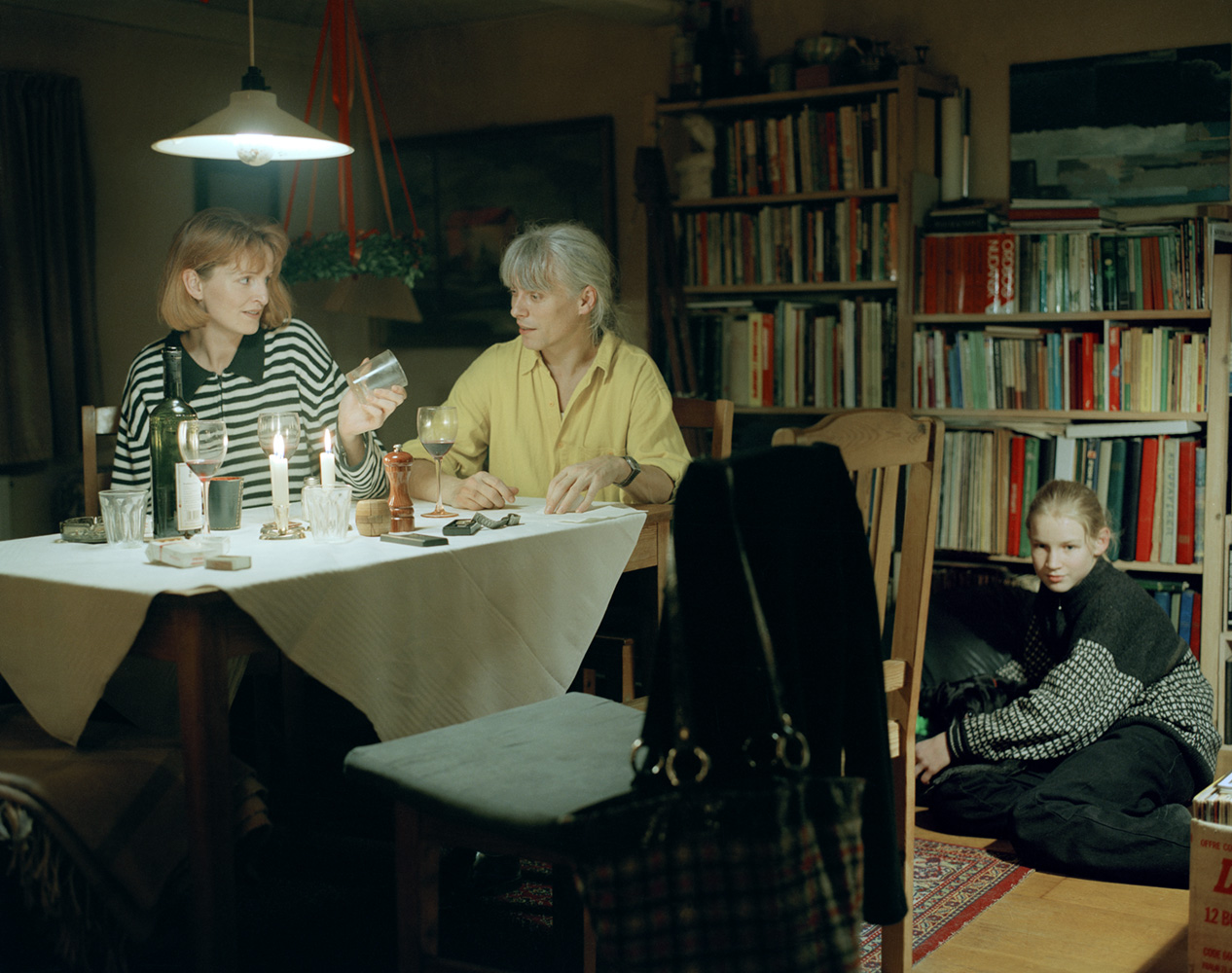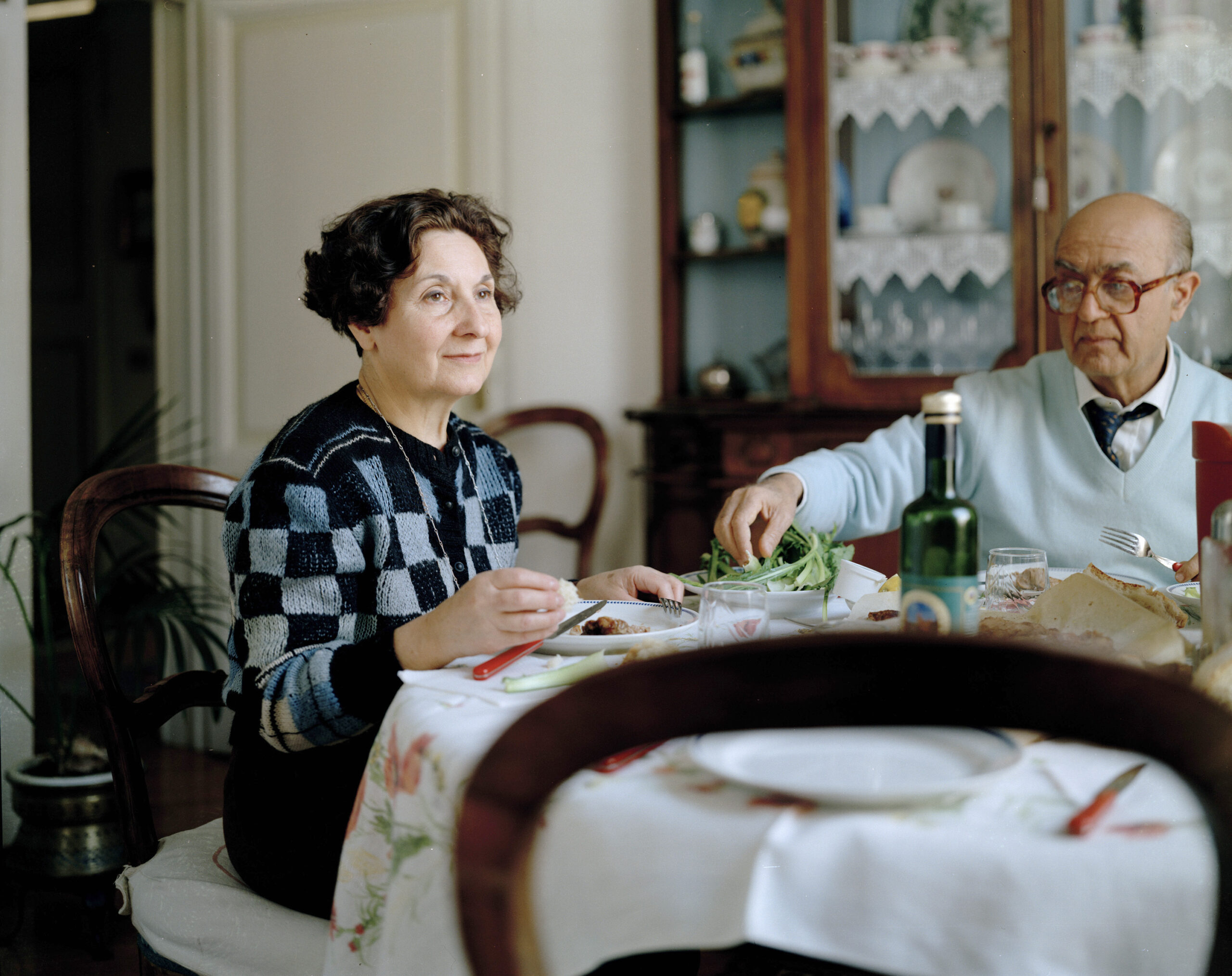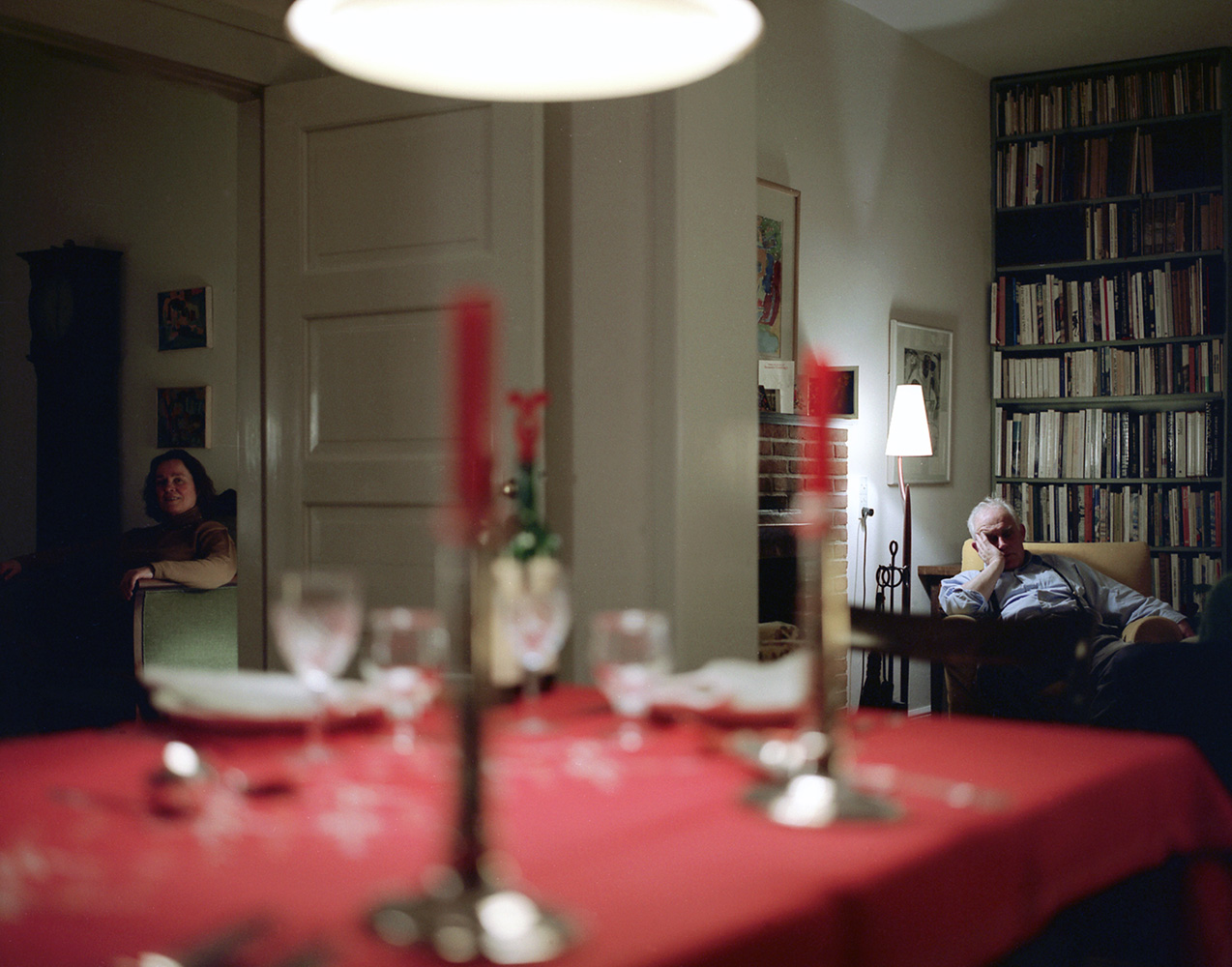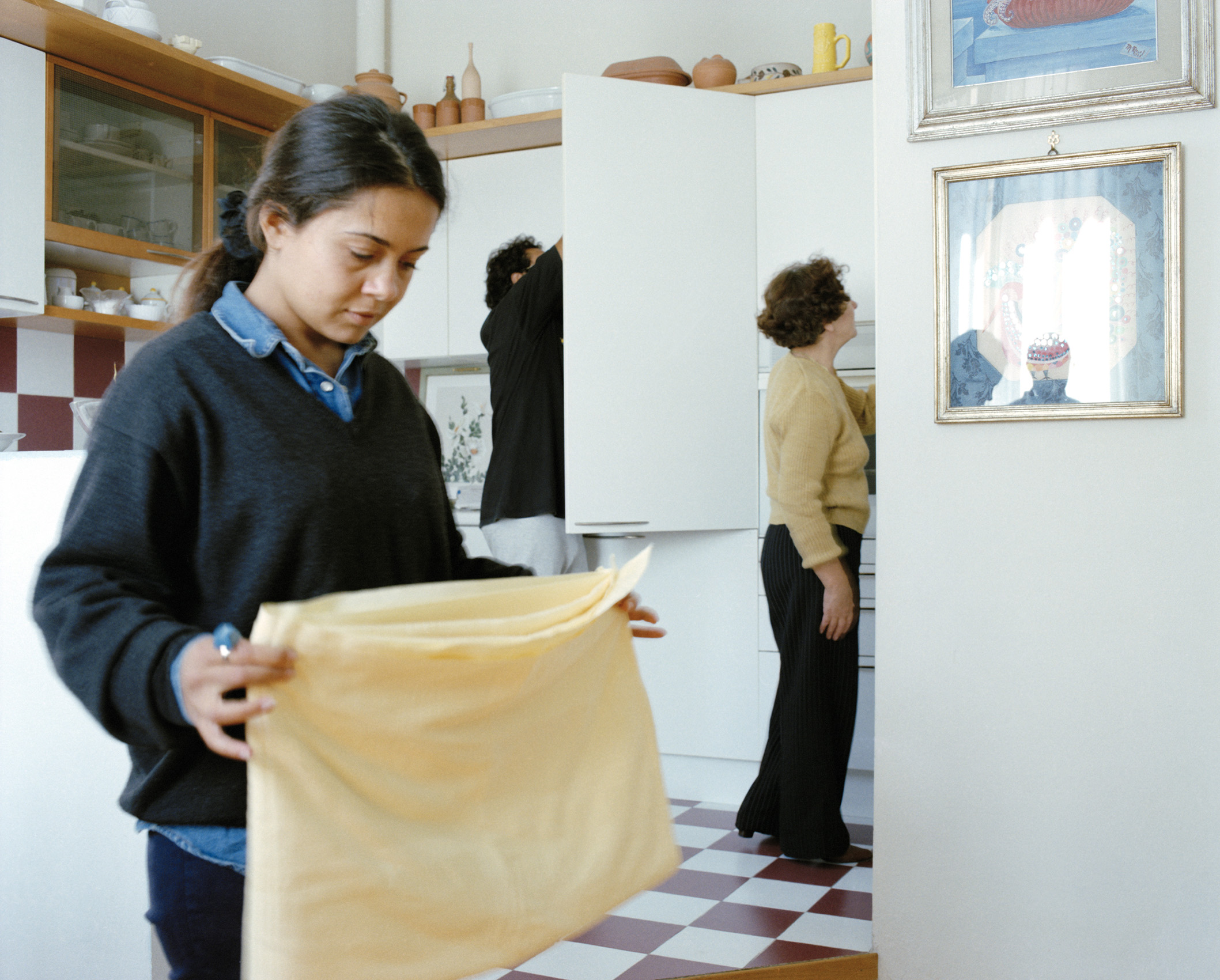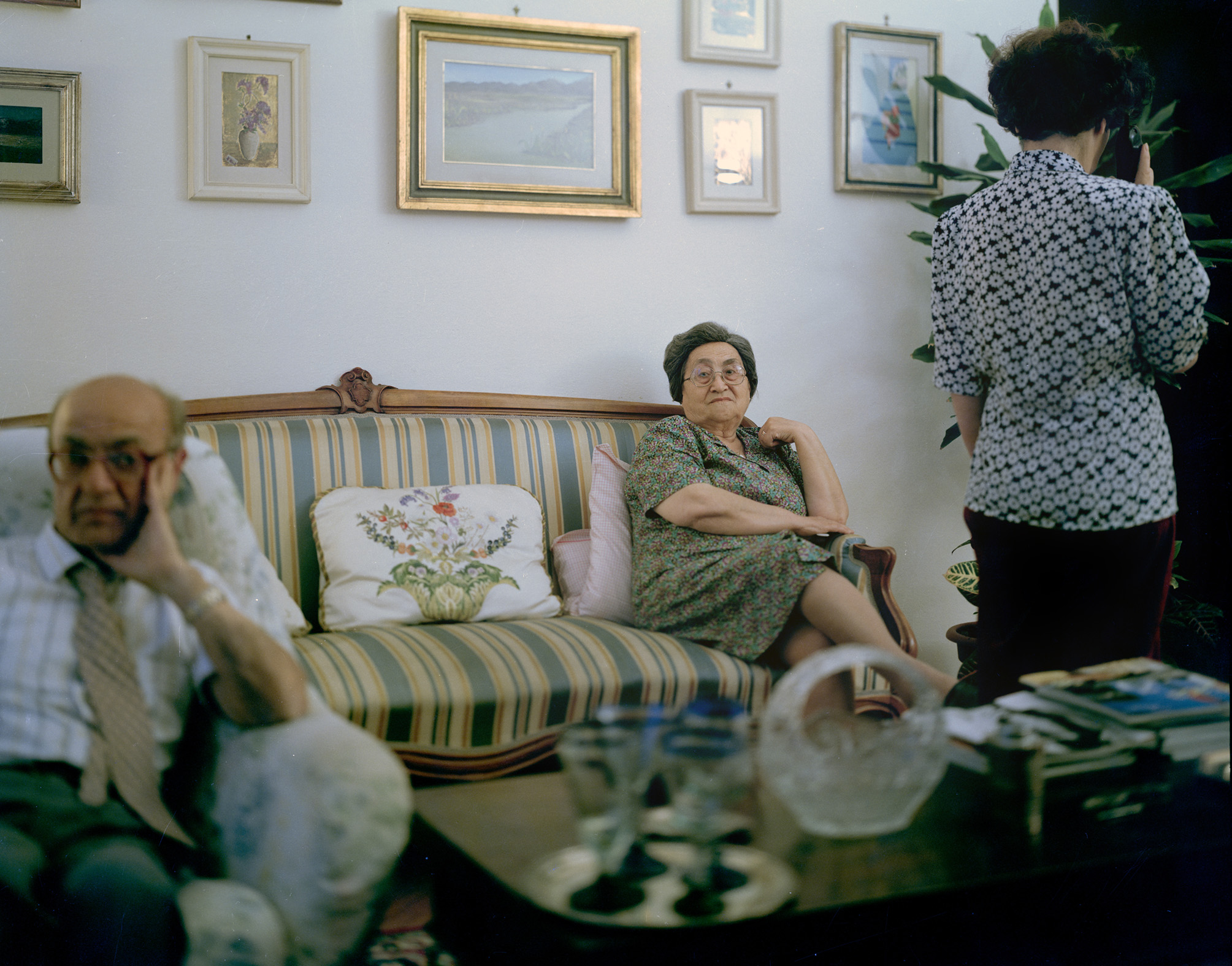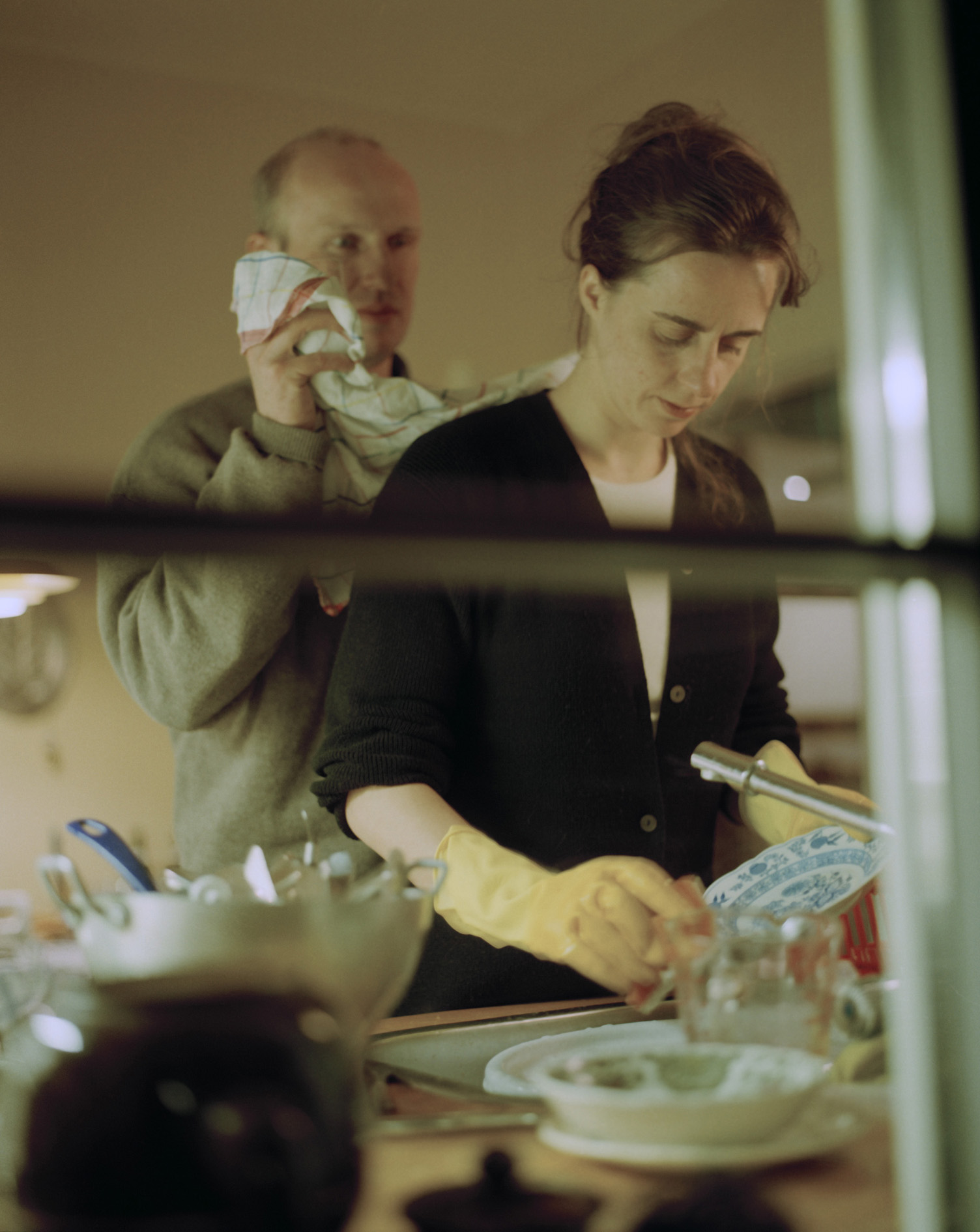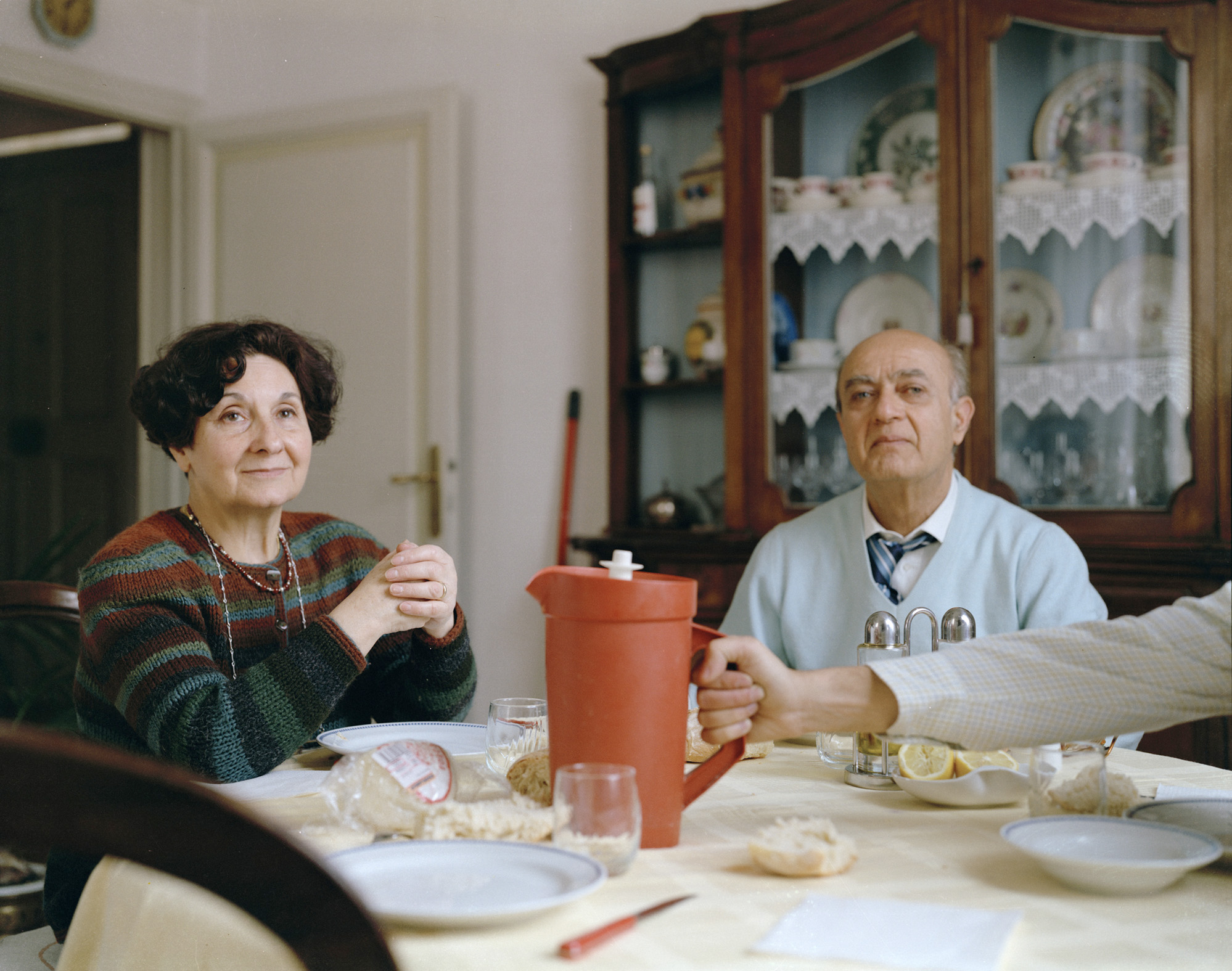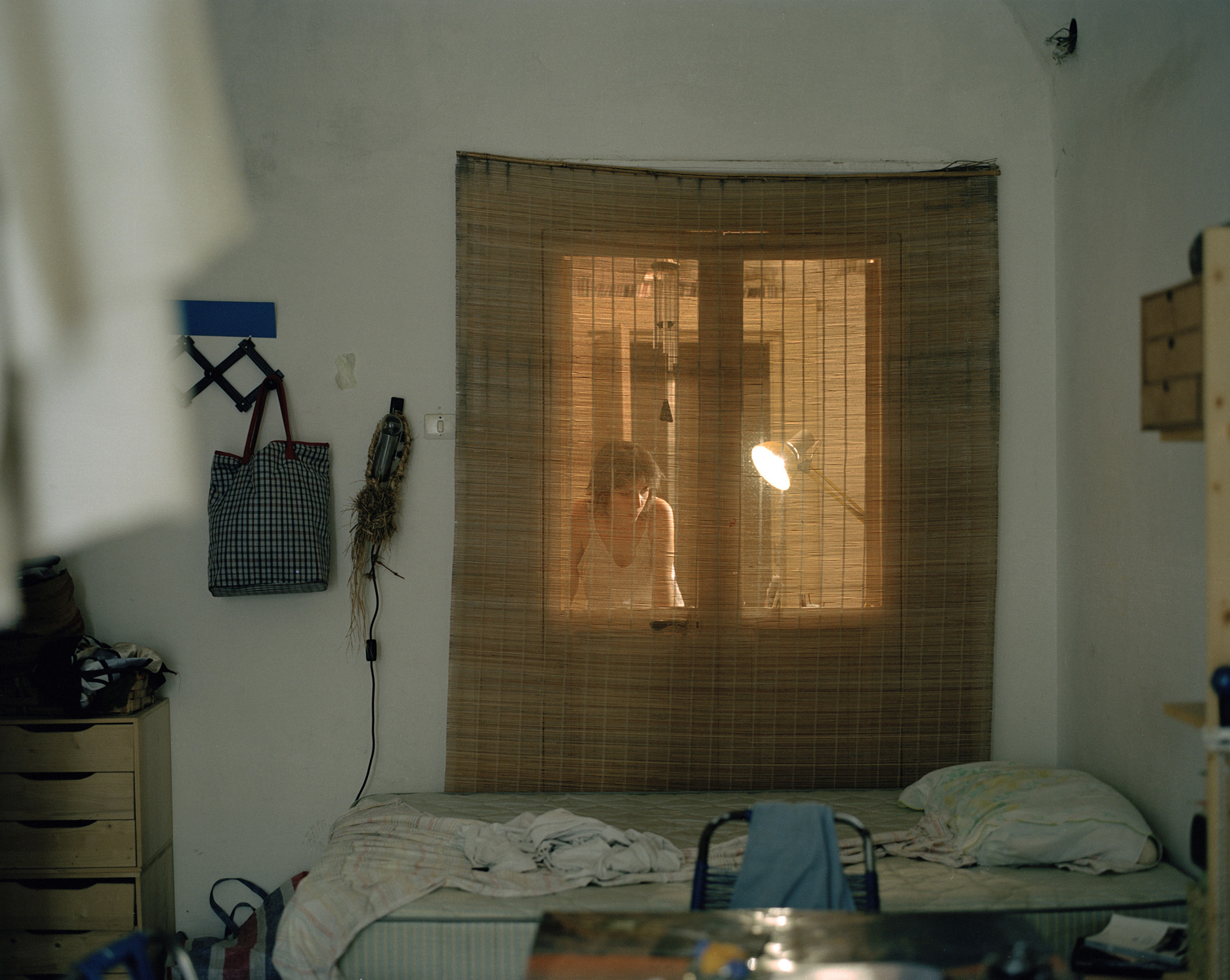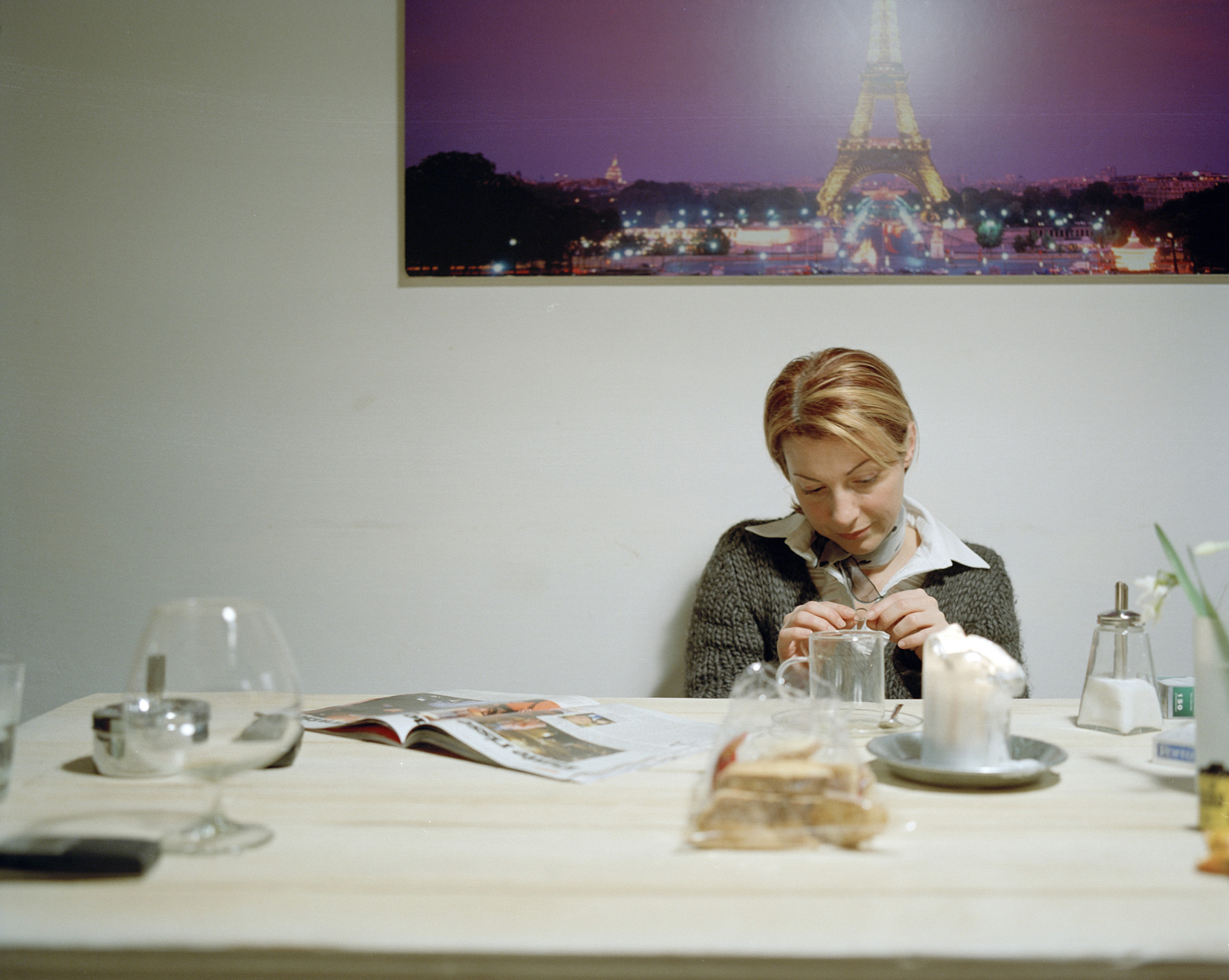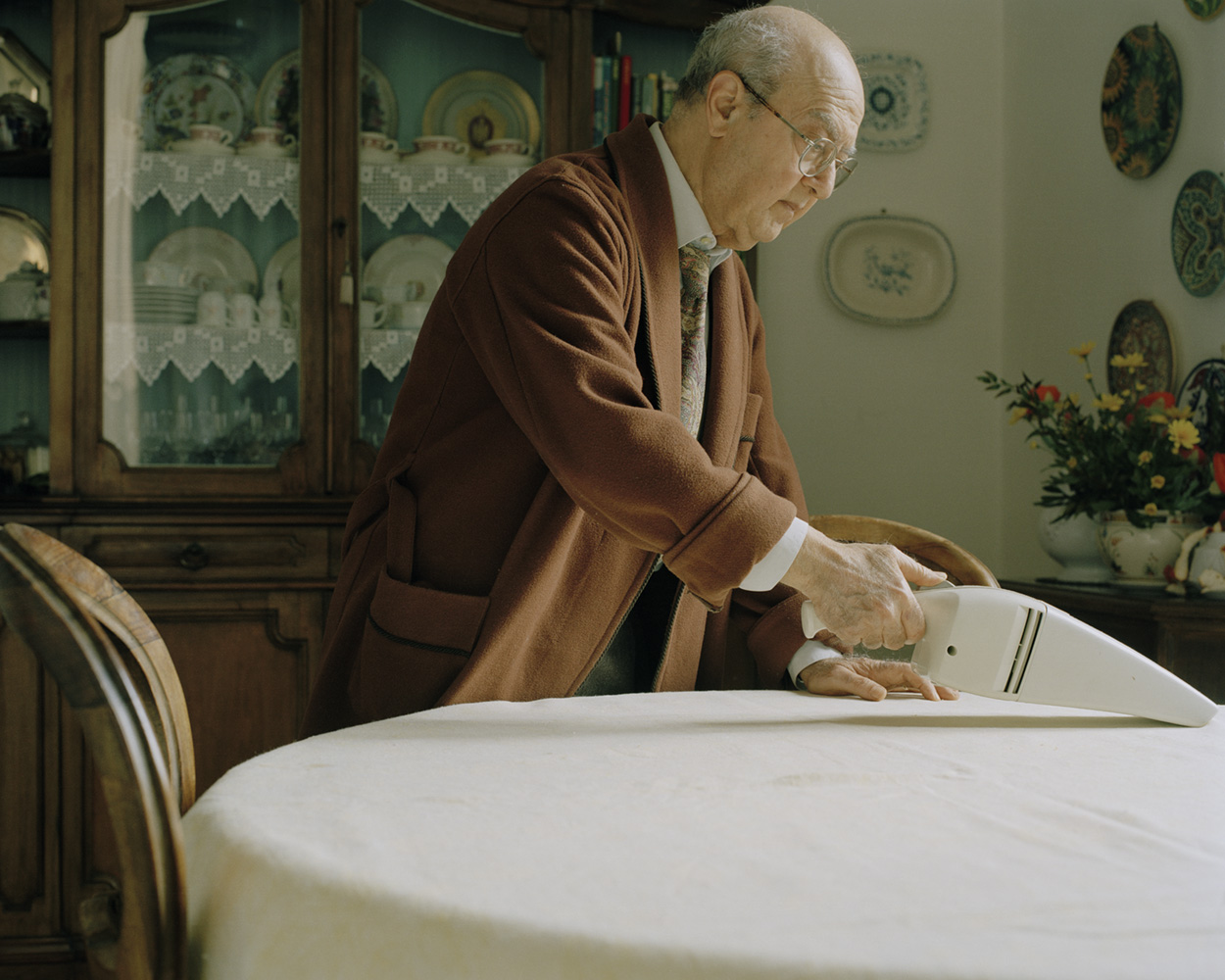
Il momento dello scatto, cioè del clic, cioè del tempo necessario affinché la luce passi attraverso l’obbiettivo e raggiunga la pellicola è un momento determinante nei lavori intitolati Psychologies e Instructions for Use. Sono entrambi due progetti di fotografia documentaria realizzati a partire dal 1996 e proseguiti per circa sette anni. Fondamentale nella genesi di queste immagini è la posa dei soggetti ritratti. Le immagini, infatti – che rappresentano scene familiari di vita quotidiana di persone appartenenti al ceto medio-piccolo borghese – sono messe in scena. Di solito usavo la luce disponibile e solo talvolta, quando era veramente necessario, luci artificiali, ma ciò che contava di più era appunto la disposizione nello spazio dei soggetti e la loro posa.
The moment of the shot, that is the click, that is the time necessary for the light to pass through the lens and reach the film is a decisive moment in the works entitled Psychologies and Instructions for Use. They are both two documentary photography projects that began in 1996 and continued for about seven years. Fundamental in the genesis of these images is the pose of the portrayed subjects. The images, in fact – which represent familiar scenes of everyday life of people belonging to the middle-petty bourgeois class – are staged. Usually I used the available light and only sometimes, when it was really necessary, artificial lights, but what mattered most was precisely the arrangement of the subjects in space and their pose.
Since around 1996 Giorgio Barrera’s work is focused on the changes of contemporary society and, more specifically, o the Italian middle class. The photographer primary subject is people engaged in the daily rituals of domestic life. What interests him most is the individual as a subject who acts and is acted upon at the same time, that is, a being whose personality and history are also, at a certain extent, determined. For this reason Barrera’s color images are situated along the line of demarcation between spontaneity and construction, between the documentary shot, resulting from the photographer’s purely receptive powers of observation, and the subtle chill of the theatrical obtained through his direct orchestration of the setting.
Psychologies (1997-98) is a map of emotional bonds binding individuals on to the other as well as to objects in their homes. It is drawn through the representation of unconscious gestures linked to banal moments of everyday life such as clearing the table, arranging flowers in a vase, reaching for a glass.
Nicoletta Leonardi, Quaderni AFT n. 5. Nov. 2000
Dal 1996 circa, la ricerca di Giorgio Barrera è incentrata sui mutamenti della società contemporanea e, in particolare, sull’analisi della classe media italiana, Il lavoro del fotografo ha come soggetto principale la rappresentazione di persone colte nella quotidianità rituale della vita domestica. Ciò che interessa Barrera è l’individuo come soggetto agente e agito al tempo stesso, ovvero dotato di personalità e storia proprie ma anche, in qualche misura, indotte. Per questo, le immagini a colori di Barrera si collocano sulla linea di demarcazione fra la spontaneità e la costruzione, fra lo scatto di documentazione, frutto della pura capacità di osservazione del fotografo, e il sottile raffreddamento nella finzione teatrale ottenuto tramite la regia diretta operata dal fotografo stesso sulla scena.
Psychologies (1997-98) è una mappatura dei legami affettivi fra i soggetti ritratti, e fra questi e gli oggetti della casa, realizzata attraverso la rappresentazione della gestualità inconsapevole legata a momenti banali, ma densi di significato, della vita domestica (sparecchiare la tavola, sistemare i fiori in un vaso, prendere un bicchiere).
Nicoletta Leonardi, Quaderni AFT n. 5. Nov. 2000
Psychologies
Nei miei primi lavori fotografici “Psychologies” e Instructions for Use”, la percezione del sé nel quotidiano, è stato l’elemento che mi ha guidato nella realizzazione delle immagini. Psychologies è nato da un’insofferenza. Dall’osservazione di come la vita piccolo medio borghese procede nell’assoluta metodicità e nel susseguirsi di ripetitivi avvenimenti. Era per me una necessità urgente mostrare questa difficoltà attraverso un linguaggio, un accorgimento visivo ben chiaro, efficace. In poche parole avevo ravvisato nell’immobilismo o se vogliamo passività delle persone un momento fotografico: era proprio il momento di stare immobili per tutta la durata dello scatto. Più o meno 1,2,4 secondi.In questo stare forzatamente immobile per essere sé stessi e pertanto a rappresentarsi che i soggetti ritratti per ovvii motivi mostravano espressioni spesso vuote o che ostentavano la presenza di un momento d’introspezione. Praticamente la macchina fotografica entra nel quotidiano fermandolo per qualche secondo: è questo un momento teatrale, l’attimo significante di un momento banale fotografato con il respiro trattenuto.
Psychologies
In my early photographic works “Psychologies” and Instructions for Use “, the perception of self in everyday life was the element that guided me in the creation of images.
Psychologies was born from an impatience resulting from the observation of how the small and middle-class life in the absolute proceeds methodically and in a succession of repetitive events. It was for me a urgent necessity to show this difficulty by means of a language and a clear, effective visual expedient. In a nutshell I had found in people’s immobility or passivity a photographic moment : it was the time to stand still for the duration of the shot.
It is in this being forcibly motionless to be themselves and therefore to represent themselves that the portrayed subjects often showed meaningless expressions that flaunted the presence of a moment of introspection. Practically the camera becomes part of everyday fixing it for a few seconds: this is a theatrical moment, the signifier of a banal moment photographed with a held breath.
Psychologies (testo di presentazione per il premio Canon)
Il fine di questo lavoro è quello di esaminare i comportamenti, le abitudini del mondo borghese. L’originario “statuto” borghese portava avanti valori come quello della proprietà e di un certo regime di ordine e servì ad escludere l’aristocrazia. La classe media contemporanea non ha cancellato queste tematiche ma più che professarle le rappresenta nel suo modus vivendi. Questo è il mondo dove sono cresciuto e dove spesso la ricercata normalità, l’apparente serenità e il ripetersi delle situazioni hanno la caratteristica di condurre le persone all’anonimato e all’insignificante. Mi sono prefisso di indagare l’individuo nel suo ambiente senza mai dimenticarne la dignità. Quando arrivo nelle case delle persone ritratte mi fermo ad osservare i soggetti e i loro movimenti in luoghi circoscritti e intimi e li pongo in relazione sia alle altre persone che agli oggetti e all’ambiente.
Quello che voglio raccontare con semplicità e sincerità, senza caricature, luoghi comuni, sono le persone nel loro essere, i loro legami, la loro storia o la loro situazione attuale in relazione alle cose che gli appartengono e che consciamente ed inconsciamente posizionano all’interno di uno spazio in cui si sentono a proprio agio. Ho attribuito alle relazioni fra i soggetti e fra questi e gli oggetti emozioni e significati e quando tutto è secondo me giusto (e significante) chiedo di verificare piccoli atteggiamenti, di compiere alcuni gesti e restare fermi per tutta la durata dello scatto, individuando in questo immobilismo il significato di una rappresentazione della vita. Il paradosso di catturare la vita in un immagine già ferma è il mio mezzo per stabilire una equazione tra vita reale, rappresentata e immagine.
Sono convinto che la fotografia sia uno dei mezzi più efficaci per lo studio dei linguaggi e della comunicazione in genere, in primo luogo perché essa stessa si esprime con simboli, mediante relazioni di sistemi e significanti, espressioni ed impressioni di colori o tonalità ed in secondo luogo perché lo studio delle relazioni e dei significati pone in essere degli aspetti che studiano i segni della vita sociale, o meglio, della psicologia sociale.
Note for the submission to the Fnac prize.
These images show something that may happen everyday. It is interesting to me to reflect upon and investigate situations of daily life because these are the situations made banal, useless ands remote by the “immaterial” images with which we are constantly flooded and swamped. Senseless, the only way to reveal these trivial moments and make them substantial was to represent them carefully stage them so to become a little bit unreal. These images are stagings of domestic life, of habits, of daily rituals. In a way we try to make our lives look like a constructed stereotype and we try to live a reality which doesn’t belong to our own real life. Because the perception of reality is nowadays completely mediatized these photos remain suspended on the threshold of what appears and what it is. In our daily lives there’s no time to think: escapism is contemplating other lives on a screen or finding means to satisfy useless needs.
This work won the Canon Prize in 1998 and, together with Instructions for use the FNAC prize in 2003.

